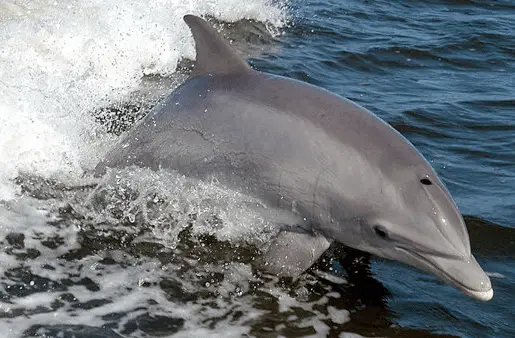Text interpretation, “Why do dolphins follow boats?”, aimed at 1st year high school students. The activity is composed of several questions that aim, above all, at the analysis of certain linguistic resources used in the referred text, among them, the comma.
You can download this Portuguese activity in an editable Word template, ready to print in PDF and also the answered activity.
Download this interpretation from:
SCHOOL: DATE:
PROF: CLASS:
NAME:
Read:
To hitchhike on the waves generated by the boats or to lose tourists from the rest of the group. At sea, dolphins take advantage of the rocking of large boats to save energy during the voyage. According to oceanographer José Martins da Silva Júnior, from the ICMBio Aquatic Mammal Center, in Fernando de Noronha, these animals also follow tourist boats to protect the rest of the group, losing the curious. “They learned the routine of human beings, which is common with wild animals that have contact with man. The most accepted hypothesis in this case is that the males come to the boat and go in the opposite direction to the rest of the flock, with females and cubs”, he explains. According to Silva, the most common species to be seen accompanying boats in Brazil are precisely those most affected by nautical tourism, the spinner dolphin and the gray dolphin. Killer whales, porpoises and tucuxi dolphins are also dolphins. The pink dolphin, despite having similar characteristics, is a very distant relative.

Available in: http://mundoestranho.abril.com.br. Accessed on: May 31, 2016.
Question 1 - The text theme is:
a) The presence of dolphins on the island of Fernando de Noronha.
b) People's interest in dolphins.
c) The marine species most affected by nautical tourism.
d) The habit of dolphins following boats.
Question 2 - The purpose of the text is:
a) disclose
b) inform
c) entertain
d) criticize
Question 3 - Identify the authority argument present in the text. What is its purpose?
A:
Question 4 – “[…] what is common with wild animals that has contact with man.”.
a) What does the highlighted verb refer to?
b) Why is this verb accented?
Question 5 - Identify two terms that take up “dolphins”:
A:
Question 6 – List:
Justifications for using the comma:
Text passages:
____ “On the high seas, dolphins take advantage of the rocking of large boats to […]”.
____ “[…] tourist boats to protect the rest of the group, evading the curious.”.
____ “Orcas, porpoises and tucuxi dolphins are also dolphins.”.
____ “The pink dolphin, despite having similar characteristics, is a very distant relative.”.
Question 7 – In “[…] is The that the males come to the boat and go in the opposite direction to the rest of the flock […]”, the highlighted term replaces:
A:
By Denyse Lage Fonseca – Graduated in Languages and specialist in distance education.
At answers are in the link above the header.
 report this ad
report this ad